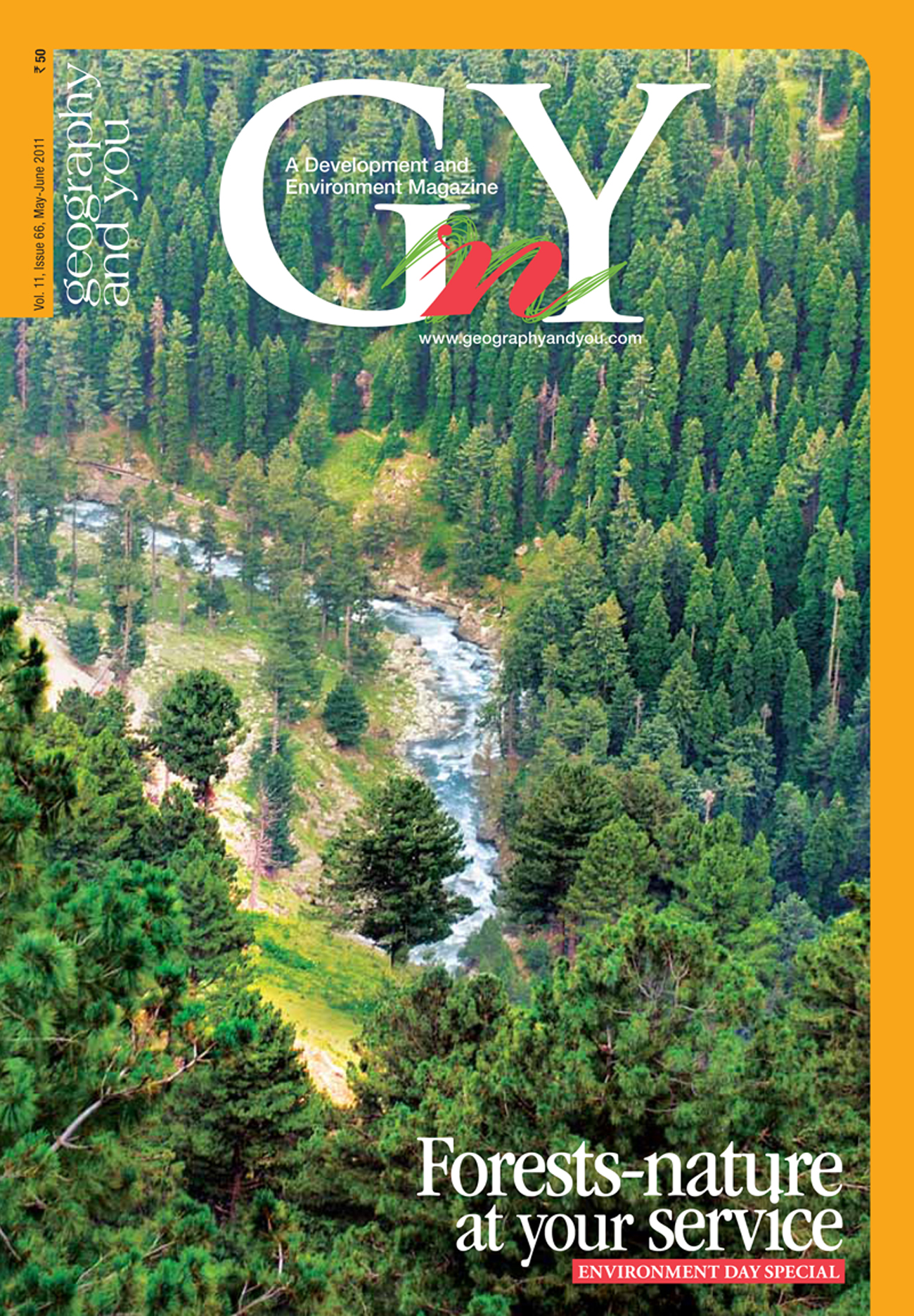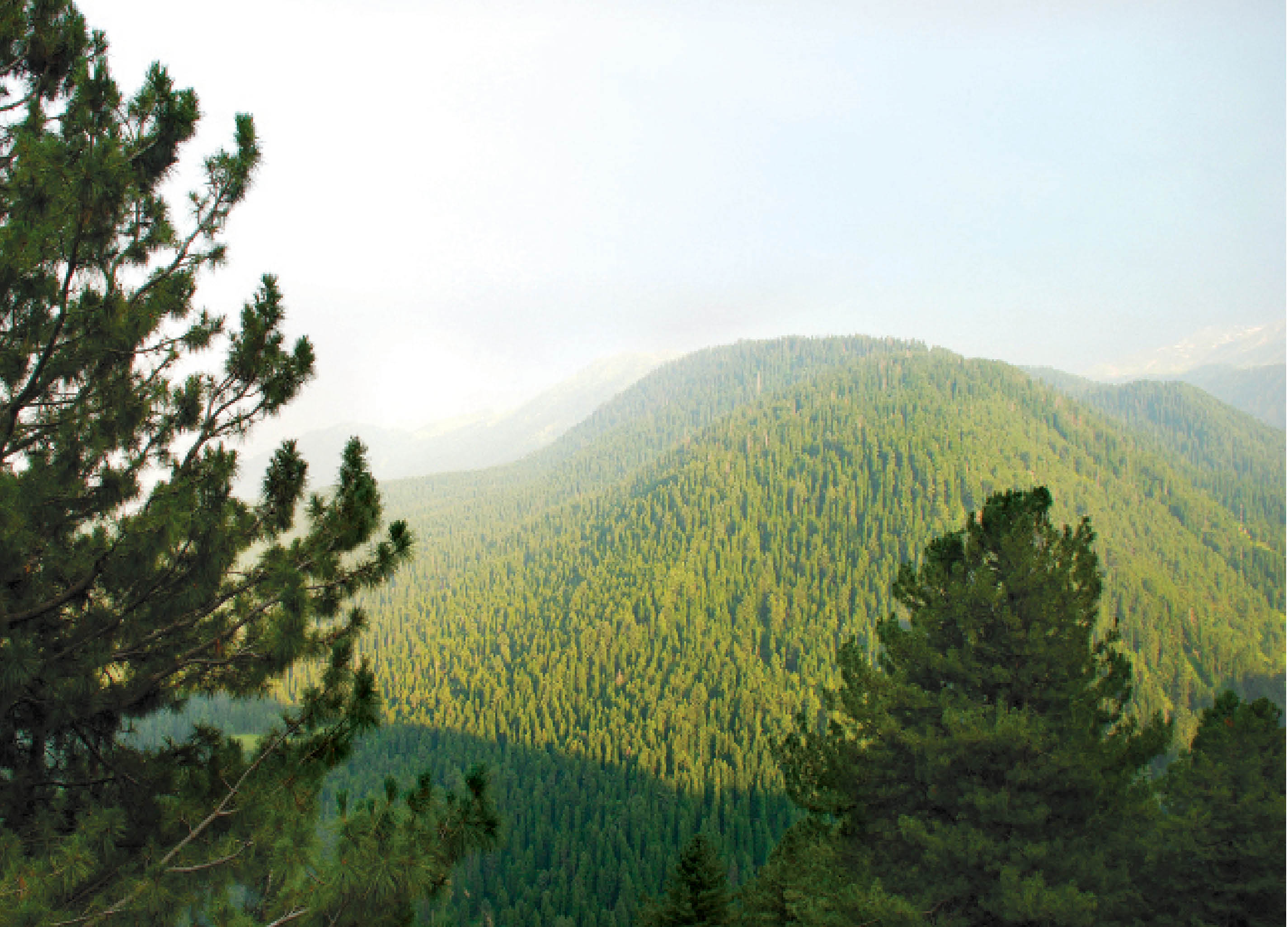
Inside this issue
The Living Forests
An assessment of the impact of climate change on forest ecosystems in India has been attempted in this paper, based on climate projections of the Regional Climate Model of the Hadley Centre and the dynamic global vegetation model IBIS for A2 and B2 scenarios. A forest vulnerability index for India has also been worked out based on the dynamic global vegetation modelling and observed datasets of forest density, forest biodiversity as well as model predicted vegetation type shift estimates for forested grids.
Under elevated CO2 conditions a possibility of decomposition occurring more than net primary production leading to a loss of carbon is predicted in some forest regions. A micro level study undertaken in the small mountain range of Kolli, located in the Namakkal District of Tamil Nadu, points towards a enhanced need to measure carbon stock deterioration amidst the struggle to fend off anthropogenic disturbances.
Over exploitation, habitat loss and fragmentation threaten the biodiversity in the northeast region of India and serious efforts have to be made by the government as well as the people to protect and conserve the dwindling greenery.
Among the various transhumant tribes that inhabit the Himalaya, the Gaddi herders share a causal relationship with the deodar and chir forests. Guarded by ferocious dogs the sheep and goat owned or loaned by the herder, forage through ancestral tracks to reach the alpine meadows every summer. With the enactment of the Forest Rights Act in 2008, the lives of the Gaddi are slowly but surely changing for the better as historic injustice is being undone.
The Sondwa Block of Madhya Pradesh saw unprecedented commercial exploitation of its forests which upset the fragile hilly ecosystem. The Bhil livelihood was the most affected with dwindling forest resources on one end and the Indian Forest Act on the other which deemed them criminals in their own backyard. In 1983, the Bhil of Alirajpur began organising themselves to protect the forests - their lifeline.
Climate Change
Scrutiny of instrumental data from Antarctic reveals that the Continent has undergone significant changes in the recent decades, with an increase in atmospheric temperature in most parts. The largest annual warming trends are found in the West Antarctic and Antarctic Peninsula in particular. In contrast, the East Antarctic has experienced little warming. However, recent studies reveal that the warming had affected many sites in the coastal East Antarctic. Importantly, the complexity of Antarctic climate is still poorly understood because of the limited periods of observational data.
The mismatch between increasing demand and decline in water availability due to overexploitation and climate change is a critical issue for policy makers. Desalination, which is the conversion of seawater to potable water through various physical and chemical methods, has emerged as a potential solution to India’s looming water crisis. The most important concern however is cost effectivity of the methodology, type of energy used for desalination and sustainability of the plant.
Census 2011
The 2011 provisional figure for the sex ratio in the age group 0-6 (CSR) is a mixed bag of hope and despair. While on one hand the tempo with which CSRs were becoming skewed in favour of boys over the last two decades has slowed down and the worst areas have shown some improvement, on the other, there is rapid spread of low CSRs to regions well beyond the traditional strongholds known for discriminatory practices towards girls. A combination of factors responsible for such spread demand contextualised short and long term interventions.
In absolute terms, the population of India has increased by more than 181 million from 2001. India today sustains 17.5 per cent of the world population in 2.4 of its geographical area. In contrast, the US accounts for 7.2 per cent of earth’s surface area with only 4.5 per cent of its population.
Report
India's Outdoors
Three aspects are highlighted - trade can make a substantial impact on water security policies, the organisational and financial support systems for community based organisations are still not a part of.
In brief
The Emissions Scenarios is prepared by the Intergovernmental Panel on Climate Change (IPCC) and was published in the year 2000. The emissions scenarios have been used to make projections of possible future climate change.
Dear readers, This world environment day theme highlighted the role of forests, attractively tagging it as ‘nature at your service’. A service that we defy, deny and destroy at will. Wildlife, communities, ecosystems and more are pushed aside in the march of development. But can inclusive devel

